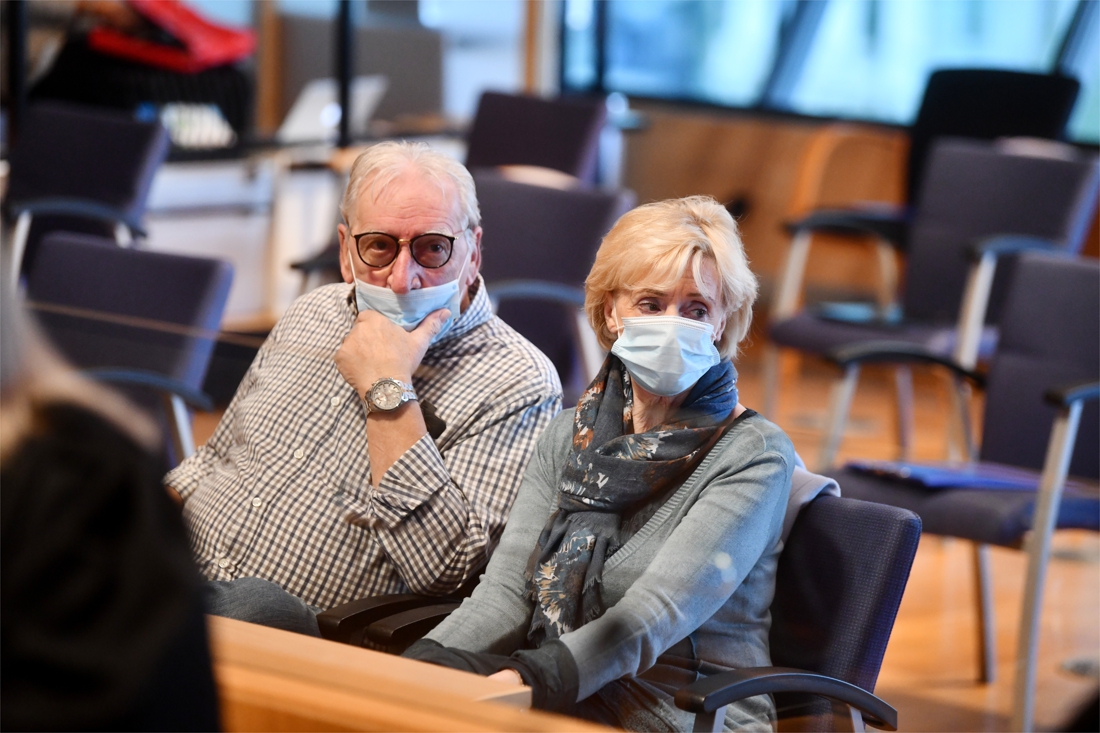Fundación Mapfre selects the 25 Spanish cities with the best accident rates and analyzes the 14 with the best safe, healthy and sustainable mobility practices.
In the last decade, a total of 25 Spanish cities in nine Autonomous Communities have brought their rates of serious and fatal road accidents closer to that of the safest city in the European Union, Stockholm, which for years has had a rate of mortality per 100,000 inhabitants less than 0.7.
The near zero cities, the safest for drivers, pedestrians and cyclists, they are mostly part of the main metropolitan peripheries. On the list are:
- Mostoles, with a mortality rate of 0.10 (the lowest in Spain),
- Fuenlabrada (0,31)
- Getafe (0,56)
- Saint Sebastian of the kings (0,23)
- Alcala de Henares (0,31)
- Las Rozas (0,42).
- Cornellà de Llobregat (0,46)
- Sant Cugat del Vallès (0,67)
- Santa Coloma de Gramenet (0,51
- Jerez de la Frontera (0,56)
- San Fernando (0,42)
- Elche (0,35)
- Torrent (0,50)
- Santiago de Compostela (0,21)
- Pontevedra (0,48)
- Oviedo (0,54)
- Cáceres (0,63)
- Talavera de la Reina (0,24)
- Counted (0,39)

These are some of the conclusions of the report, Horizon C3: Nearly Zero Cities, which has presented MAPFRE Foundation in order to publicize the list of 25 cities and municipalities with more than 80,000 inhabitants that have a lower mortality rate and a lower rate of injuries per million inhabitants between 2014 and 2018, as well as explain the reasons why certain cities are approaching zero accidents.
The investigation, which starts from the official statistics of the General direction of traffic and from the information provided by road safety experts and various municipal representatives, it classifies the 25 Spanish cities and analyzes 14 in depth, some of them included in the ranking of the 25, such as Pontevedra, and other medium-sized cities, such as Vitoria (Álava), Saint Sebastian (Guipúzcoa), Terrace (Barcelona) and San Cristobal de La Laguna (Santa Cruz de Tenerife), which are not necessarily the ones with the lowest rates of serious injuries and deaths, but which stand out for having reduced the number of deaths between 1999 and 2019 more than the rest of the cities, as well as for having developed policies of exemplary sustainable mobility over the past two decades.
Fewer cars and more pedestrians
Neither the rent, nor the motorization rate, nor the population density. What characterizes the safest cities are pedestrian areas, bike lanes, traffic calming and Sustainable Urban Mobility Plans (SUMP), some of the peculiarities of the safer municipalities, which stand out for contributing to the circulation of fewer motor vehicles and to doing so at a lower speed, as well as promoting modes of travel that generate less danger, such as walking and cycling. The study also highlights that only one of the cities with a low record of fatal accidents has extensive use of the motorcycle.

Oviedo, for example, stands out for having a large pedestrian area and with a peripheral area in the center, called Oviedo Redondo, with 30 km / h limitation; Terrassa offers a traffic calming system in certain neighborhoods of the city; Telde and Cáceres, bet on the calm of traffic and the pedestrianization of the center; and Pontevedra and Torrent, promote an urban design in favor of the pedestrian, establish by default a limit of 30 km / h or lower in all calm roads of the city and frequently carry out speed controls, both fixed and mobile. The Toledo municipality of Talavera de la Reina It also stands out for having increased visibility in pedestrian crossings in recent years, and San Sebastián, for having greatly improved the pedestrian area of the city and promoting the use of public transport.
The report also makes reference to other common factors, linked to the vial education, particularly for children and the elderly, as well as the creation of school paths and promotion of the use of protection systems.
Challenges: reduce the rate of fatalities and serious injuries
Guarantee safe mobility for minors, the elderly and people with disabilities (main risk groups), as well as contribute to preventing distractions and loss of driver skills and developing more and better Local Road Safety Plans within the framework of safe, healthy and sustainable mobility strategies, are some of the proposals emphasized in this research, which reveals two pending subjects. The first is to reduce the death rate per 100,000 inhabitants in cities until it is close to 0.7 (reference value, Stockholm); and reach the rate of 3.5 serious injuries per 100,000 inhabitants, which is considered to be the next goal.

Currently, of the set of 25 cities with low mortality rates, only five, Fuenlabrada, Torrejón de Ardoz, Parla, Getafe and Telde, show rates of serious injuries, that is, less than or equal to 3.5 serious injuries per 100,000 inhabitants, which is equivalent to five hospitalized injuries for each deceased. The Madrid municipality of Rivas-Vaciamadrid, for example, it stays very close to this value, with 3.8.
–

:strip_icc():format(jpeg)/kly-media-production/medias/1938312/original/043626300_1519637048-1.jpg)
